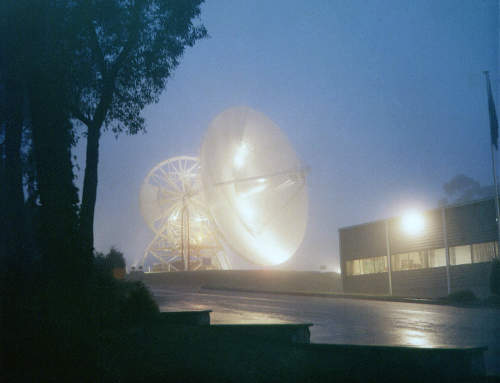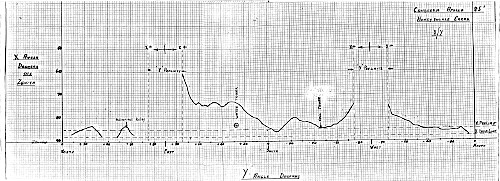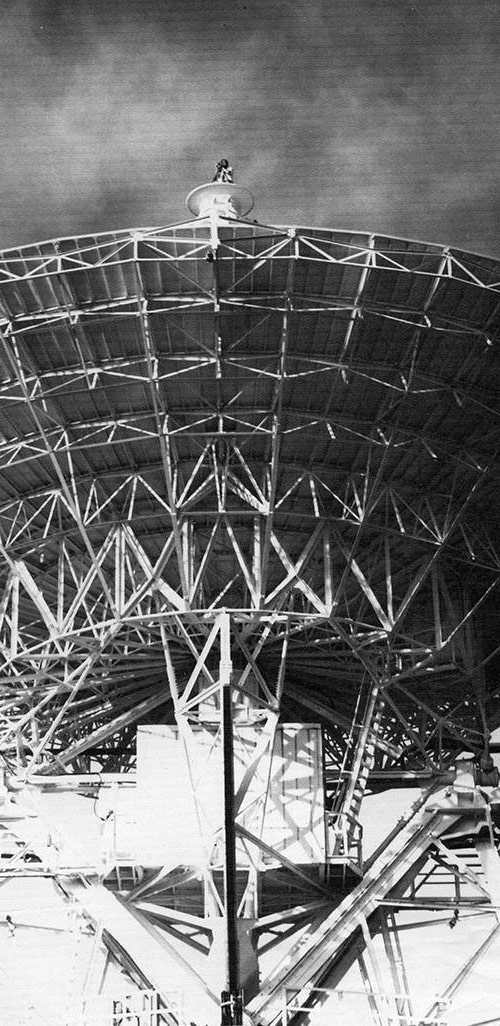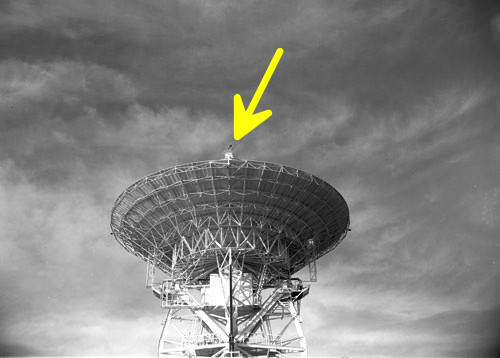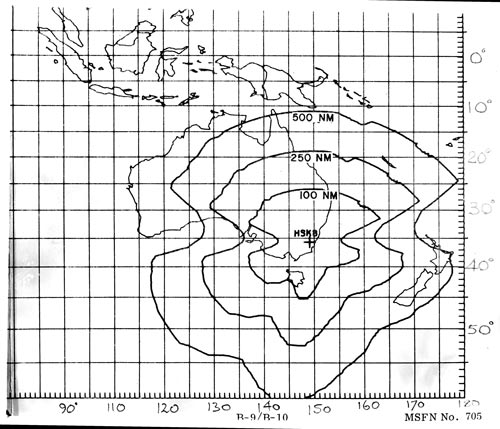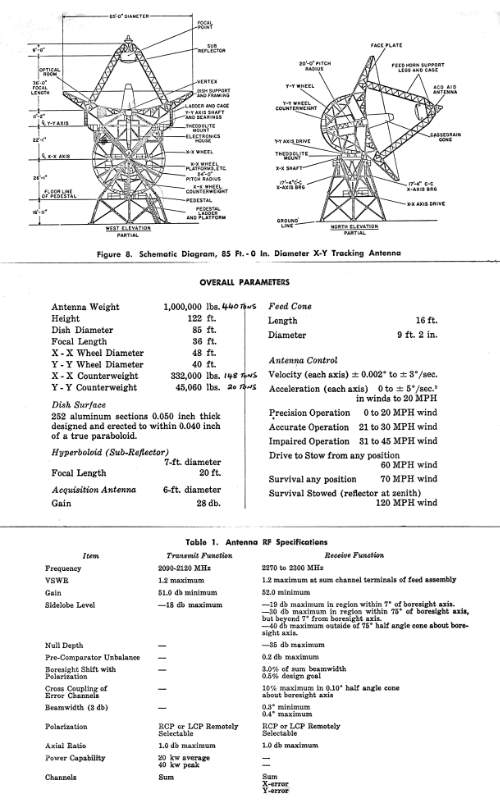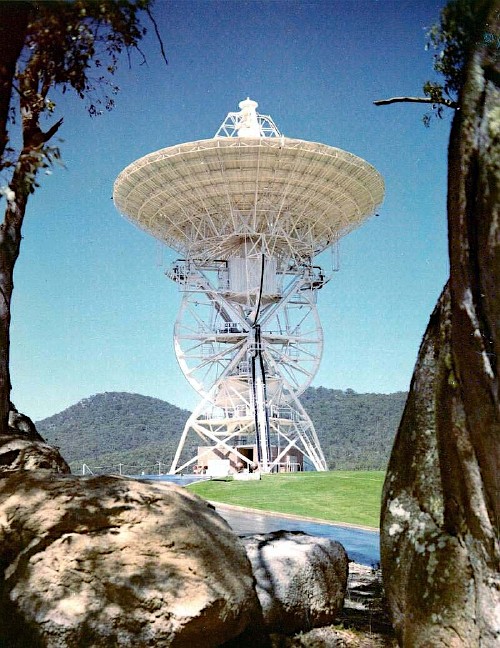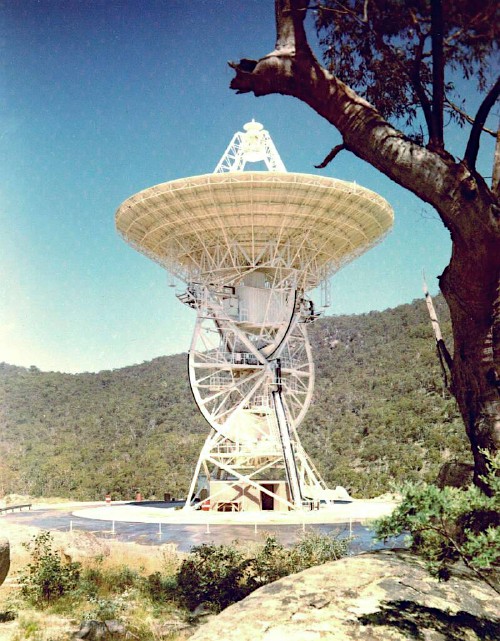The
Honeysuckle Creek 26 metre Antenna
|
The Honeysuckle Creek antenna in fog early one morning. (Earlier scan with uncorrected colours.) Photo: Hamish Lindsay. |
The Honeysuckle Creek antenna tracking the Apollo 15 CSM in its 68th revolution of the Moon on Wednesday 4th August 1971. Photo: Hamish Lindsay. |
Horizon profile, West to East. |
Horizon profile. |
Horizon profile. |
Here’s Hamish standing on the apex of the antenna with his theodolite, surveying the Horizon profile. August 1971. Photo preserved by Hamish Lindsay, scan by Colin Mackellar. |
And here’s a scan of the 4x5 inch negative. Photo by Hamish Lindsay, scan by Colin Mackellar. |
This December 1970 antenna profile, drawn by Hamish Lindsay, shows the coverage of the Honeysuckle antenna for a spacecraft at various heights in nautical miles. (1 nautical mile = 1.85 km). The East-West keyhole – a mechanical pointing contraint caused by the design of the antenna mount – is easily seen. Scan by Colin Mackellar. |
